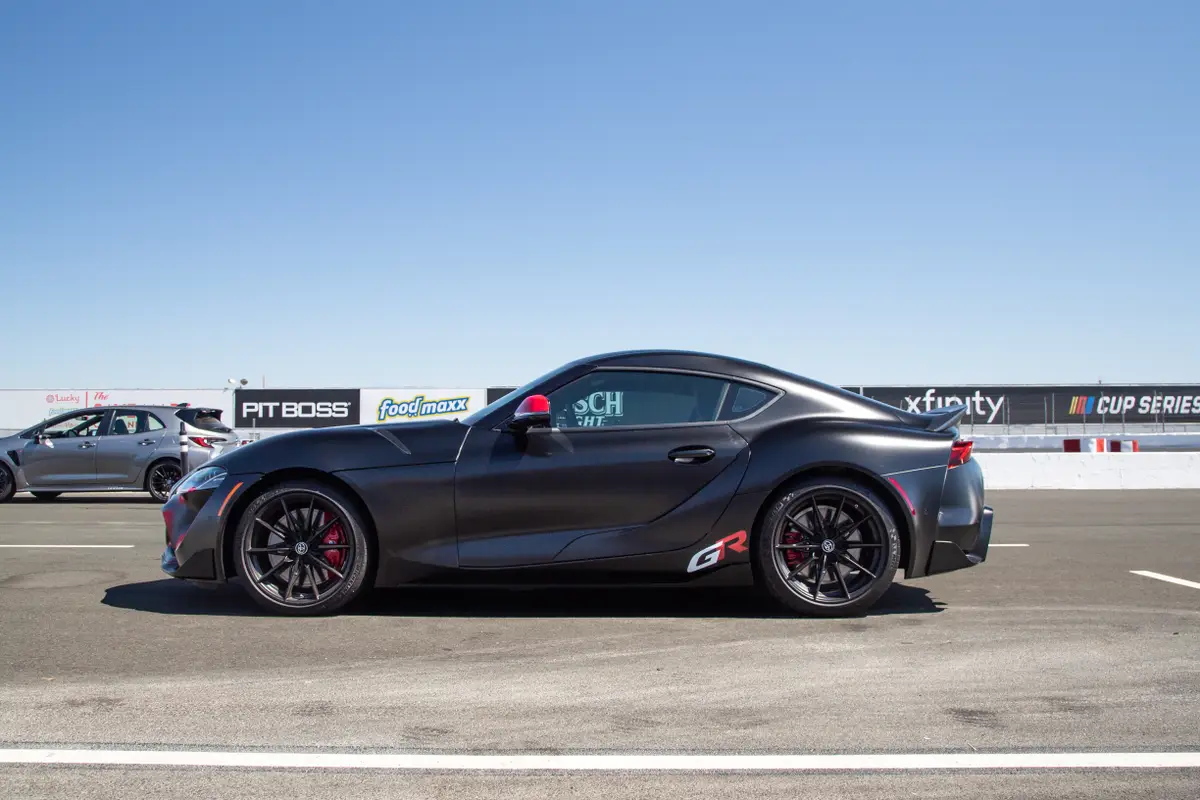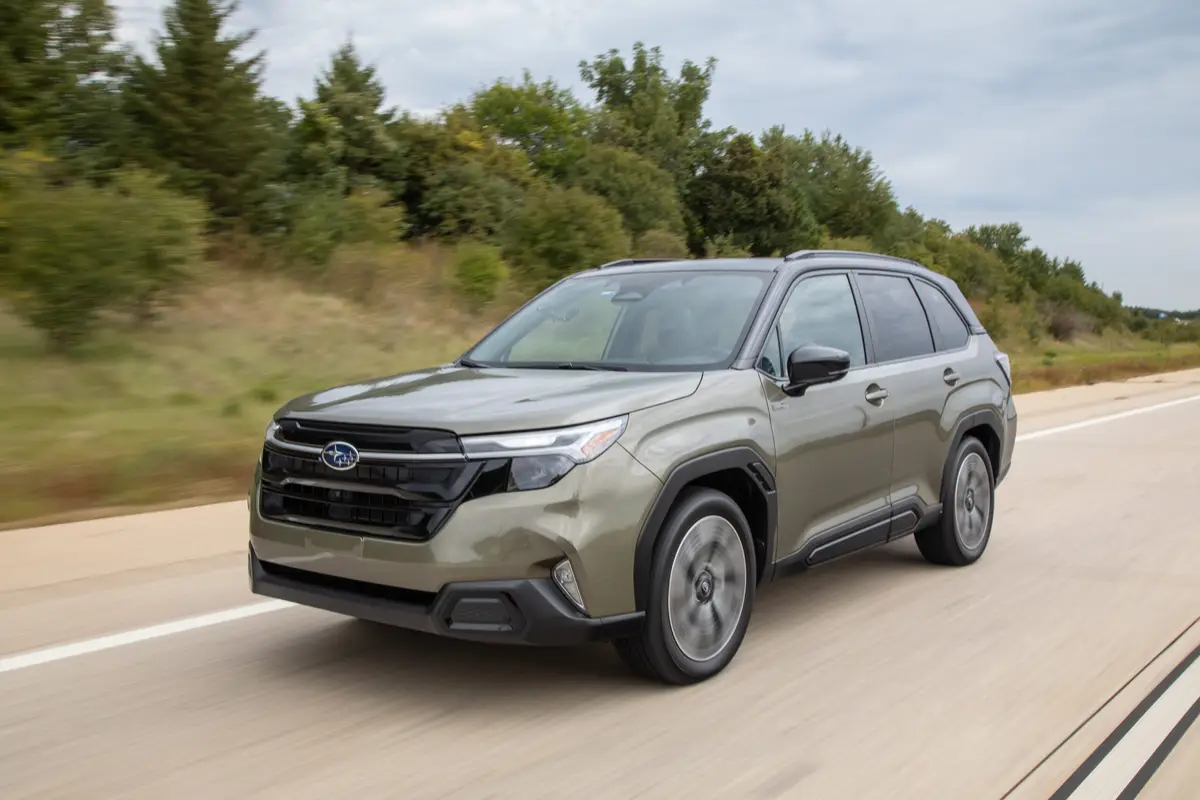2004 Mercury Monterey: What's New
Vehicle Overview
Mercury offered a minivan starting in 1993, but the Villager, which was closely related to the Nissan Quest, disappeared during the 2002 model year. For 2004, Mercury has a brand-new front-wheel-drive minivan ready for its dealerships, and this one is totally unrelated to Nissan’s new Quest. The Monterey is built on the same platform as the latest Ford minivan, which has been renamed the Freestar and also arrives as a 2004 model. As in the past, the Mercury version is more upscale in nature. Mercury introduced the Monterey at the Chicago Auto Show in February 2003.
The Monterey went on sale in the fall of 2003, and it takes its name from some well-known Mercury cars of the distant past. “The Monterey begins to define the design path Mercury is taking,” said Susan Pacheco, director of Mercury programs. Mercury is targeting its minivan at buyers in their 30s to mid-40s, who seek a level of luxury as well as utility in their vehicles.
Power comes from a 4.2-liter V-6 engine. Notable features include a fold-into-the-floor third-row seat and an optional parking-assist system that warns of obstacles in front or in back of the vehicle while parking. Safety Canopy three-row curtain-type airbags are standard on higher-end models. Sound-deadening enhancements promise a quiet ride. The Monterey is produced in Oakville, Ontario, Canada. Three versions are offered: Convenience, Luxury and Premier.
“Mercury is a vital part of the Ford revitalization plan,” said Jim O’Connor, Ford’s group vice president of North American marketing, sales and service, during the Monterey’s Chicago debut. “We are very committed to the Mercury brand.”
Exterior
Monochromatic cladding decorates the bodysides of the Monterey, which features a Mercury signature waterfall-style grille made up of vertical bars. The styling cues of the grille and other elements are borrowed from the company’s Mountaineer sport utility vehicle. The door and liftgate handles and other exterior components are finished in satin chrome. The taillamps have satin-aluminum accents. Dual power-operated sliding side doors are standard.
Machined wheels hold 16-inch tires. The wheels have a solid-spoke design on the Convenience and Luxury series, but split-spoke wheels are installed on the Premier model. Self-sealing tires are offered on upper-end models. A power liftgate became available after the start of the 2004 model year. The Monterey rides a 120.8-inch wheelbase, stretches 201 inches long overall and stands 68.7 inches tall.
Interior
Like most minivans on the market, the Monterey seats seven occupants. The second-row seats may be moved out of the way with a single pull of a lever, which provides access to the back row. Standard dual captain’s chairs have a fold-and-tumble feature; they can be removed without the use of tools.
Dual-zone climate control is standard. Heated and cooled front seats — first seen on the Lincoln Navigator — provide additional comfort by directing air into both the seat cushions and seatbacks. A satin-aluminum finish is used for the instrument panel and gauge cluster. Cupholders are mounted in the doors, and storage compartments are provided overhead and atop the instrument panel. Power-adjustable pedals can help drivers of shorter stature find a suitable driving position. An optional video entertainment system uses a DVD player.
Under the Hood
A 4.2-liter V-6 engine develops 201 horsepower and 263 pounds-feet of torque; it mates to a four-speed-automatic transmission.
Safety
All-disc antilock brakes with electronic brake-force distribution are standard. Smart front airbags have Occupant Classification Sensing. Mercury’s Safety Canopy curtain-type airbag system protects occupants in all three rows. Standard in higher-end models, the Safety Canopy includes side-impact airbags and is optional for the Convenience model. All seating positions have three-point safety belts. An AdvanceTrac electronic stability system is standard on the Premier edition and optional on the Luxury model.
Driving Impressions
Though it’s not as trucklike as the departed Ford Windstar, the Monterey still leans further in that direction than most minivans. The Monterey’s performance and handling aren’t so different from the Windstar’s, which makes it difficult to consider the Monterey and its Ford Freestar companion as wholly new vehicles.
Acceleration is energetic enough, and the automatic transmission operates well. Maneuverability isn’t bad, either. Ride comfort falls short of some rivals but ranks as acceptable.
Annoyances in this minivan are mostly minor and center on ergonomics. For instance, grabbing the handbrake lever is a long reach. The seat bottoms are on the short side, and the seats don’t move too far rearward. Second-row space is good, but passengers’ knees may be forced upward. It’s possible to slip right past the desired gear when using the column-mounted shift lever. Climate-control adjustments are a bit odd. When parking-assist sensors are installed, they’re so sensitive that they seem to activate when an obstacle is anywhere in the area.
Visibility is good except over the left shoulder, where a headrest impedes the view. There’s a handy covered tray on top of the dashboard and a long but narrow glove box. The gauges are modest in size but are easy to read and pleasantly organized.
Featured stories




